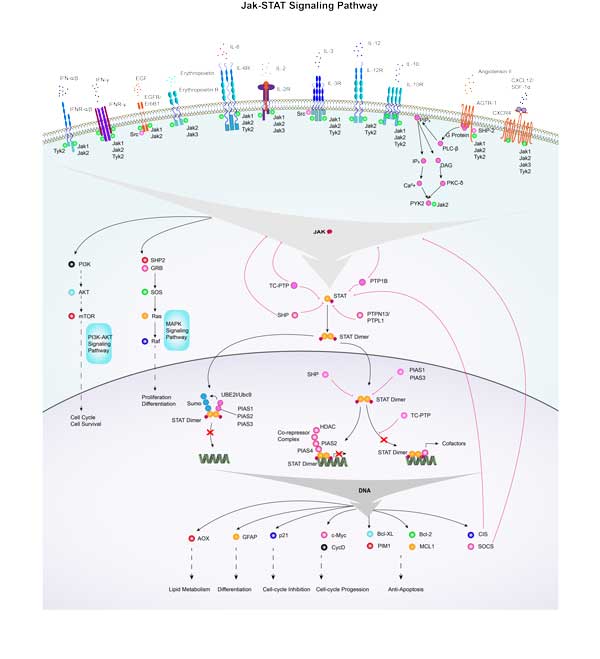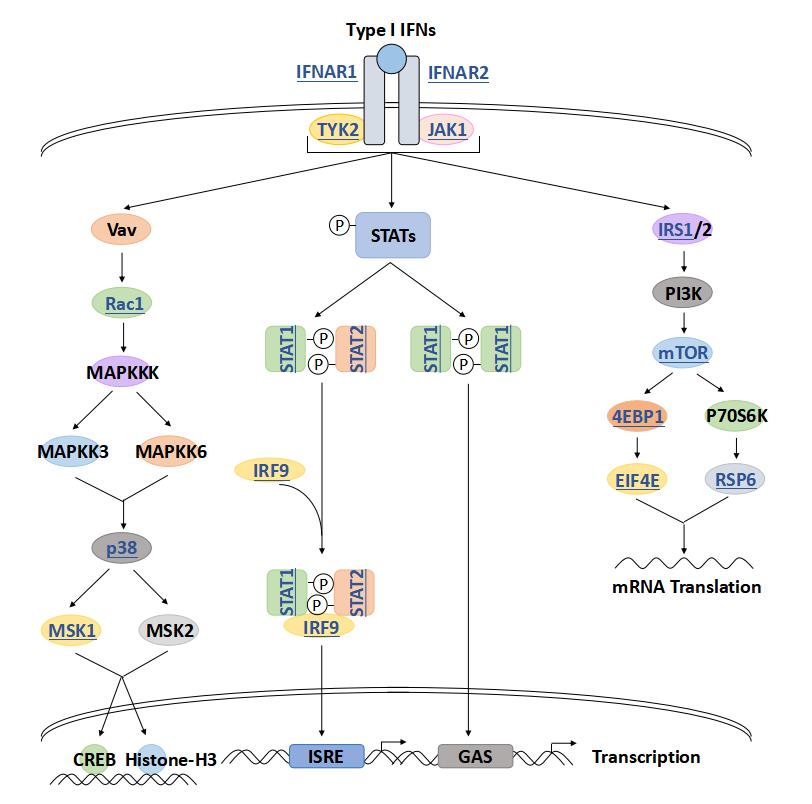MTOR
-
Official Full Name
mechanistic target of rapamycin (serine/threonine kinase) -
Overview
The protein encoded by this gene belongs to a family of phosphatidylinositol kinase-related kinases. These kinases mediate cellular responses to stresses such as DNA damage and nutrient deprivation. This protein acts as the target for the cell-cycle arrest and immunosuppressive effects of the FKBP12-rapamycin complex. The ANGPTL7 gene is located in an intron of this gene. [provided by RefSeq, Sep 2008] -
Synonyms
MTOR;mechanistic target of rapamycin (serine/threonine kinase);FRAP;FRAP1;FRAP2;RAFT1;RAPT1;serine/threonine-protein kinase mTOR;rapamycin target protein 1;mammalian target of rapamycin;rapamycin and FKBP12 target 1;FKBP-rapamycin associated protein;rapamycin associated protein FRAP2;FKBP12-rapamycin complex-associated protein 1;FK506 binding protein 12-rapamycin associated protein 2;FK506-binding protein 12-rapamycin complex-associated protein 1
Recombinant Proteins
- Human
- Mouse
- Rat
- Zebrafish
- Wheat Germ
- E.coli
- Insect Cells
- Mammalian Cells
- HEK293
- HeLa
- Non
- Flag
- His
- DDK
- Myc
- T7
- Avi
- Fc
Involved Pathway
MTOR involved in several pathways and played different roles in them. We selected most pathways MTOR participated on our site, such as ErbB signaling pathway,HIF- signaling pathway,Phospholipase D signaling pathway, which may be useful for your reference. Also, other proteins which involved in the same pathway with MTOR were listed below. Creative BioMart supplied nearly all the proteins listed, you can search them on our site.
| Pathway Name | Pathway Related Protein |
|---|---|
| Prostate Cancer | MAP2K2,RB1,PDGFB,PDPK1,FGFR1,PDGFA,AKT2,INS,SRD5A2,TGFA |
| Central carbon metabolism in cancer | AKT2,HK1,HKDC1,MAPK1,PKM,MAP2K2,ERBB2,NRAS,AKT1,KRAS |
| Insulin signaling pathway | PCK2,PRKAB2,PTPRF,PRKAR2AB,KRAS,PRKCZ,PPP1R3C,CALM1B,PIK3R3B,RPS6KB1 |
| Phospholipase D signaling pathway | PDGFC,DNM3,ARF6,PPAP2A,PLCB3,CYTH4,PLA2G4A,PLCB2,HRAS,FCER1A |
| mTOR signaling pathway | AKT1,IGF1,EIF4E1B,HIF1AB,IRS1,POLDIP3,RHEB,RRAGCA,PRKAA1,PIK3CB |
| AMPK signaling pathway | PPP2R1A,ELAVL1,PPP2R5C,ADIPOR1,RAB8A,PFKFB2,LEPR,CCND1,PIK3R3,PPARG |
| Insulin resistance | NR1H3,RPS6KAL,PTEN,PRKCQ,PPP1CA,INS,PRKAB1B,SLC2A2,RPS6KA3,AKT1 |
| Glioma | ARAF,PDGFRA,IGF1R,PRKCA,PLCG1,MAPK3,PIK3CG,RAF1,CAMK2A,CALM3 |
| MicroRNAs in cancer | Abcb1b,HMGA2,DNMT1,EZR,IRS2,SLC45A3,ABCB1,MDM4,PDGFA,PIK3R2 |
Protein Function
MTOR has several biochemical functions, for example, ATP binding,RNA polymerase III type 1 promoter DNA binding,RNA polymerase III type 2 promoter DNA binding. Some of the functions are cooperated with other proteins, some of the functions could acted by MTOR itself. We selected most functions MTOR had, and list some proteins which have the same functions with MTOR. You can find most of the proteins on our site.
| Function | Related Protein |
|---|---|
| kinase activity | CAMKK1A,MAPK14A,CLK4B,TNIKB,CDK5R1A,RAF1A,PINK1,ACVR1L,EPHA4A,MAP4K6 |
| protein serine/threonine kinase activity | PASK,PKZ,MKNK2,NEK8,KSR2,DYRK1A,MAPK13,TRIOA,OBSCN,PAK2B |
| phosphoprotein binding | PKD2,RB1,MID1,ARR3,MS4A2,YWHAE,TRPV1,URI1,CSNK1D,FKBP4 |
| protein binding | ASMTL,LOC729991,SAP18,PDHX,DCPS,SCRN1,IREB2,CDK1,NFU1,DOCK9 |
| drug binding | SMO,NR1I2,CHRM1,DHODH,CHRNA7,CHRM2,MT3,DRD1,PDE2A,CYP2D6 |
| protein dimerization activity | MXD4,STX2,HES2.1,ASCL1B,HNF1BA,SMG1,LYL1,HEY1,NCOA1,MSGN1 |
| RNA polymerase III type 2 promoter DNA binding | RPTOR,MAF1 |
| RNA polymerase III type 3 promoter DNA binding | RPTOR,MAF1 |
| ribosome binding | ETF1A,SEC61A1,C12orf65,EIF2A,RPSA,CPEB2,OLA1,IGHMBP2,EIF2S1A,PPP1R2P9 |
Interacting Protein
MTOR has direct interactions with proteins and molecules. Those interactions were detected by several methods such as yeast two hybrid, co-IP, pull-down and so on. We selected proteins and molecules interacted with MTOR here. Most of them are supplied by our site. Hope this information will be useful for your research of MTOR.
RPTOR
MTOR Related Signal Pathway
Resources
Research Area
Related Services
Related Products
References
- Knuth, A; Liu, L; et al. Placenta Growth Factor Induces Invasion and Activates p70 during Rapamycin Treatment in Trophoblast Cells. AMERICAN JOURNAL OF REPRODUCTIVE IMMUNOLOGY 73:330-340(2015).
- Gargalionis, AN; Korkolopoulou, P; et al. Polycystin-1 and polycystin-2 are involved in the acquisition of aggressive phenotypes in colorectal cancer. INTERNATIONAL JOURNAL OF CANCER 136:1515-1527(2015).





